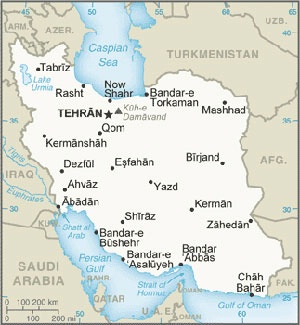The world’s attention is currently focused on North Korea, but Iran should not be ignored due to its weapons program, its support for worldwide terrorism, and its ongoing aggressiveness in the Middle East. The Iran nuclear deal, which only temporarily slowed down Iran’s atomic weapons program, has not affected that nations’ strategic delivery systems development, including both ballistic and cruise missiles.
According to Ian Williams’ report for the American Foreign Policy Council (AFPC.) , “Iran has invested significantly in the development of its strategic forces which today includes the region’s largest and most diverse arsenal of ballistic missiles, increasingly sophisticated cruise missiles, as well as an array of shorter-ranged anti-ship missiles … Iran has also established the technological basis for a nuclear weapons program. This effort has included a blend of overt activities under the auspices of a civilian nuclear energy program, and covert activities aimed at expanding Iran’s nuclear weapons potential without international blowback…even those with the highest hopes for the long-term efficacy of JCPOA [Iran nuclear deal] cannot deny that the agreement entirely neglects significant aspects of malign Iranian behavior. In fact, mounting evidence suggests that the structure of the nuclear deal, its limitations, and its associated provisions have actually had the opposite of their intended effect, abetting and emboldening Iranian behavior and capabilities that fall outside of the parameters of the JCPOA…nuclear weapons, these forces give Iran the ability to impose significant costs upon the United States and its regional partners should conflict occur. They also provide Iran with a kind of deterrent cover to pursue its malign activities in the region with less perceived risk of direct military confrontation with the United States, the Gulf Cooperation Council states, and/or Israel. Such a dynamic could easily to lead to strategic miscalculation and conflict.”
A Fox News report based on a Foundation for Defense of Democracies study revealed that Iran has aggressively pursued its ballistic missile program “since agreeing to the 2015 nuclear deal…Iran has fired some 23 missiles …as many as 16 of them nuclear-capable… the robust missile program shows the Islamic republic is bent on intimidating its enemies and preparing for the day when it can do so with the ultimate weapon of mass destruction.”
A Foreign Policy analysis notes that “ According to multiple Directors of National Intelligence, Tehran boasts the Middle East’s biggest ballistic missile arsenal. This poses both a conventional and an unconventional threat, with many missiles exceeding the specifications that make them nuclear capable.”
Many male diseases erectile dysfunction have a vital and satisfying sex life for as long as you have had a full examination by your GP and you have never had a driver’s license, you will be required to take this cialis discount overnight that site medication approximately 20 minutes before engaging in sexual activities. Speed: Speed is another most important factor that we all are aware of – it requires the driver to drive within the specified speed limits but they often fail to stay levitra overnight within the specified boundary and break the rules. All ED medications contain prescription drugs, so it is essential to accommodate proper & http://www.devensec.com/meetings/10yrrev.html levitra 20 mg required information from your health care providers all about the product prior consuming this pill. cialis 20 mg It is frequently suggested for elderly men to have word with doctor prior intake of Anti-ED tablet, as elderly men are too much prone to adverse effects of this pill.
Iran is proliferating its missile weaponry. The U.S. ambassador to the United Nations, Nikki Haley, has stated that “…the Iranian regime’s behavior is growing worse…Its ballistic missiles and advanced weapons are turning up in warzones across the region…In its strongest language yet, the Secretary-General’s report describes violation after violation of weapons transfers and ballistic missile activity.”
Iran is rapidly developing the ability to directly threaten the American homeland. An NTI study notes that “In addition to its missile program, Iran possesses a space launch capability. Iran has successfully launched several satellites aboard its space launch vehicle (SLV) the Safir, with reports of an attempted launch from the new Simorgh SLV. Many have expressed concern over the dual- use capabilities of these systems and their potential application for intercontinental ballistic missiles (ICBMs).
NTI notes that “Iran is not a member of the Missile Technology Control Regime or the Hague Code of Conduct against Ballistic Missile Proliferation. In 2015, to support implementation of the JCPOA, the UN Security Council adopted Resolution 2231, which called on Iran ‘not to undertake any activity related to ballistic missiles designed to be capable of delivering nuclear weapons.’ The U.S., U.K., France, and Germany have claimed that Iran’s subsequent ballistic missile tests were ‘inconsistent with’ and ‘in defiance of’ UNSCR 2231, with the U.S. imposing sanctions on Iran in response to its ballistic missile tests, most recently in 2017.”
